Eurail Passes are famous as a way to save money while exploring Europe, but they are also confusing and often misunderstood. They are still an amazing money-saving tool for certain types of travelers, and not a wise idea for most others. Before Europe introduced dynamic rail pricing (like airfares, where the price varies depending on when you buy it), a Eurail Pass was an easy way to save money since all tickets had fixed prices that were generally fairly expensive. These days most travelers can save far more money just by buying their train tickets at least a few weeks in advance.
That said, Eurail Passes are still great for longer trips and especially for people who like to make plans as they go. Dynamic rail pricing made advanced tickets much cheaper, but it also made last-minute tickets MUCH more expensive. Below we will discuss Eurail Passes and whether they are a good idea for your trip or not.
Disclosure: This is a reader-supported website and some of the links are affiliate links where a small commission is paid to help keep this site going.
Note: This article was written in 2012 and has been continuously updated since then, so all information is current as of April, 2024.
Eurail 2024 changes: New countries and a mobile version

Aside from that it’s just the normal fact that they have updated the timetables as of December 2023 and have a few promotions going on, but those usually don’t happen over the busy summer season.
Eurail passes are now available in a mobile version
Until very recently, Eurail Passes were only available in paper form and they were quite confusing at first. You’d get a pass with a series of empty boxes on it and you’d need to enter your trip before you’d use your pass each day and then have the first conductor verify it. If you lost your ticket (and this was not uncommon), it was a whole ordeal to attempt to get a replacement.
Again in 2024 Eurail offers a fully mobile version that is delivered instantly to your mobile device with no delivery fee. And if you somehow lose your phone, you can resume using your Pass on your replacement with no extra headache. This is MUCH more convenient in every way and as long as you can keep track of your phone you’ll always have your train pass handy.
If your trip will be 2 weeks or less, a Eurail Pass probably won't be worth it

Eurail Passes are ideal for travelers on longer trips, and especially those who don’t want to plan all of their destinations and dates far in advance. If you have your itinerary pretty much planned out and you don’t require much flexibility, you’ll be far better off just locking in your dates and buying your train tickets as early as you can. Again, they can be surprisingly cheap if you buy 2 to 4 months out.
If you are age 27 or younger, a Eurail Pass is probably worth it

With this in mind, if you are lucky enough to still be 27 or younger, you should seriously think about getting a Eurail Global Pass Youth, partly because the sense of freedom instantly gets more expensive at age 28. The age cutoff was 25 until recently, so this change is a great deal for anyone who will be 26 or 27 at the start of their trip.
You aren’t guaranteed to save money by buying a Youth Eurail Pass, but chances are good that you WILL save money and you’ll definitely save a lot of hassle as well. Especially now that Eurail Passes come in a mobile form, it’s even that much more convenient to just hop aboard any train that is about to leave the station and not worry about buying or even having a ticket. Especially for young people, it can be really fun and exhilarating to literally just walk into a train station with your backpack and look at the departure board and then decide where to go at that moment.
If you are age 60 or over, a Eurail Pass could also be great value
Another fairly recent change is that anyone who is 60 years or older at the start of the use of a Eurail Pass now gets 10% off the normal adult fare. That new discount is going to make this a great value for many travelers who might have been on the fence about buying a full-price pass before.
>>>Check prices on Eurail Passes
If you are planning on traveling in 1st Class anyway, a Eurail Pass is probably worth it
Most 2nd Class trains provide similar comfort and legroom to Business Class airline seats, or at least close enough, so for most people it’s not worth the added expense for 1st Class. However, if you are rich or elderly or fear contact with strangers, a 1st Class Eurail Pass is probably worth it no matter what.
Not only do you get much more comfort and legroom in 1st Class, with only 3 seats across instead of 4, but there is another advantage to 1st Class on European trains. Since it’s mostly business travelers and wealthy people traveling in 1st Class, the carriages are almost always mostly empty except in the mornings and late afternoons between large cities. In 2nd Class the only available seats might be two seats in an 8-seat cabin with all the other seats taken up by a loud family or a group of rowdy friends. In 1st Class you are all but guaranteed a peaceful ride, and usually plenty of empty seats from which to choose.
A hidden Eurail Pass benefit: Making extra stops on travel days for free

Brussels in particular is one I recommend a short stop in because the small historic center around what they called the Grand Place is amazing and gorgeous, while the rest of the city is rather boring by European standards. With a Eurail Pass you can jump off the train in Brussels and explore the city center for a few hours (luggage storage is cheap and easy) and maybe have lunch, and then hop on a later train to complete your journey to Amsterdam. There are opportunities like this on many if not most trips between larger cities, and if you buy the point-to-point tickets you have to stay on the train you booked.
Another example is the high-speed train between Barcelona and Madrid, which takes about 2.5 to 3 hours in each direction. There are some interesting cities in between, but in this case you could take a morning train from Barcelona to Madrid and then check into your accommodation, and then hop on another train from Madrid to Toledo, which takes about 30 minutes and costs €14 each way. Toledo is a historic and fascinating town, but it’s also pretty small and you can explore the main sights in an afternoon. With a Flexi Eurail Pass where you buy a certain number of travel days, you can save more money by adding on these sorts of nearby stops on travel days.
If you'll be touring major cities within ONE country, a single-country pass might be perfect, and Second Class passes are available for all ages
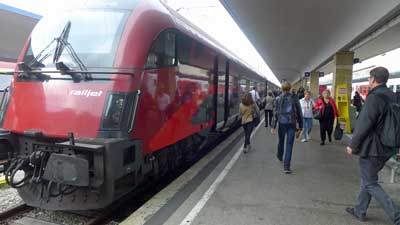
Single-country passes are still available and they MIGHT be good value for you, but it depends on which country and how much traveling you’ll be doing. If you plan on going all over a larger country such as Germany, France, or Spain, and especially if you like to make plans as you go, a Single-country pass for one of those might be your best deal. On the other hand, smaller countries (such as the Netherlands) or countries where train tickets are already fairly cheap (such as Italy) might be harder to get value out of. Long story short, for single-country passes you really need to check fares of the places you plan on going and see how they add up compared to the pass.
>>>Check prices for Single Country Passes
Eurostar (between London and Paris or Brussels or Amsterdam) tickets are now included for Eurail Pass holders for a €30 reservation fee
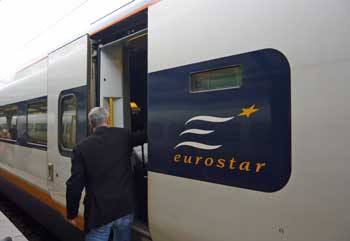
Our recent tests show that Eurostar fares one-way from London to Paris can be as low as €49 if you book about 3 months out, or as expensive as €214 for the same seat if you wait until the day of travel to buy. Round-trip/return tickets can be even cheaper if there is a promotion running.
>>>Check Eurostar prices
If you are on a really low budget, a Eurail Pass isn't a good idea
Here’s the thing. As we’ll discuss below, there are many potential benefits to Eurail Passes, and they will often save you money, but they do cost a lot and they only really save you money when traveling in the more expensive countries.
So let’s say you have a flight to Rome and then US$2,000 to last you a month after you arrive. Buying a Eurail Pass before you go would help you see a lot in that month, but you’d practically need to sleep in parks for your funds to last the whole time. You’d be better off moving slowly in the southern countries, or just in Italy itself, as a way to have the best holiday on your budget. You might also be tempted to use a Eurail Pass mostly on night trains so you can save the cost of a hotel or hostel, but those aren’t ideal for most of us.
The cheapest way to get around Europe by rail is to buy all train tickets online at least a couple months in advance. The fares are low, but they are non-refundable and non-changeable. See how far in advance you should buy train tickets to get those attractive fares.
If more than a little of your travel will be in eastern Europe, a Eurail Pass isn't a good idea
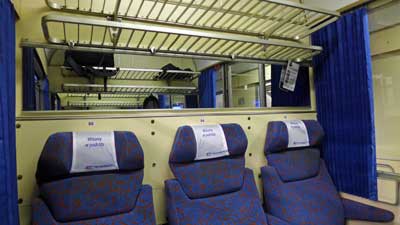
The good news is that the trains operating in this region, and the buses that operate alongside and/or where trains aren’t running, are quite cheap. So if any significant part of your trip will be into this region, a rail pass doesn’t make sense.
Basic types of Eurail Passes
Long gone are the days of the simple options, replaced by specialized passes that are meant to appeal to different styles. It should be pretty easy to figure out which is best for you, and then keep going down the page to decide if it’s worth it at all.
Eurail Global Pass – 4,5, or 7 days within 1 month or 10 days within 2 months
Until recently the minimum number of travel days with 10 days within 2 months, but now you can buy as few as 4 days within 1 month for about €200 to €250 (for first class). This can actually be an interesting strategy if you are planning many shorter and cheaper trips (like within Italy or Eastern Europe), and also 4 or 5 longer trips such as Berlin to Amsterdam. This way you can buy only 4 or 5 travel days and only use them for your most expensive travel days, and just pay as you go or buy cheap advance tickets for your other journeys.
Eurail Global Pass – 15 to 90 consecutive days
This variation allows for unlimited travel on the system for between 15 and 90 total days. They are really only a good idea for people who are certain they are going to travel very often, with much of it being in the north of Europe. The problem with them is that if you really try to get your money’s worth, you will probably ruin your trip by spending too much time on trains in general. On the other hand, if you will be in Europe for 2 or 3 months and plan on traveling around a lot, you can get a LOT of use out of a longer pass. The 3-month pass is around €900 so it’s literally about €10 per day. Imagine going back and forth between Berlin and Munich or Barcelona and Madrid for €10 per day!
One Country Pass
Obviously these are for travel within one country only. Again, they can be great deals if you plan on extensively moving around one particular country.
Where to buy your Eurail Pass
Eurail Passes are cheapest and easiest to buy online, primarily from two main sources which offer all the same products at the exact same prices:
This is a reliable company based in the Netherlands but with fulfillment offices in the US and Ireland. Price of Travel is a partner with this company, and if you use the links of this site we earn a small commission to help keep this site online. Eurail.com is usually cheaper than RailEurope (discussed below) by the way.
They were founded in the 1930s and are based in New York, but owned primarily by the French and Swiss rail companies. They offer free shipping (2 to 3 business days) on all orders of US$399 or more, although now that a mobile version is available, this is meaningless. Price of Travel is a partner with this company, and if you use the links of this site we earn a small commission to help keep this site online.
Reservations on European trains for rail pass holders
For most of the fastest trains between major cities you’ll need to reserve a seat even with a rail pass. It can usually be done just before you leave and the cost is usually around €5. Here’s a full list of which European trains require reservations and which don’t.
Reservations are required on all intercity (longer distance) trains in or involving France, Spain, Switzerland, and Italy. For most trains in Germany, Austria, Netherlands, Belgium, and most of eastern Europe, you can usually find trains that don’t require seat reservations. Often, if you don’t leave until after 9:30am or so, you can ride on any train with no seat reservation, but you have to research each leg to be sure.
How to determine which trains require seat reservations, and also get schedules
You can click on the link just above this section for a list of countries and their seat-reservation policies, but in some cases it’s actually a bit more complicated than that. For example, you can generally ride without a seat reservation on fast ICE (Inter City Express) trains in Germany if you depart after 09:30 in the morning. They do this to free up seats for business travelers who pay full fare, and they don’t mind filling up seats with rail pass holders on trains leaving a bit later.
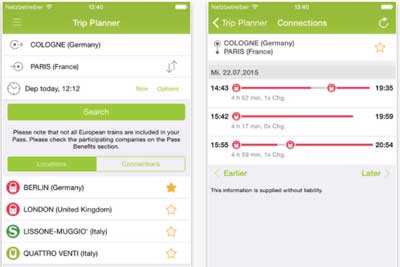
Night trains in Europe are making a comeback
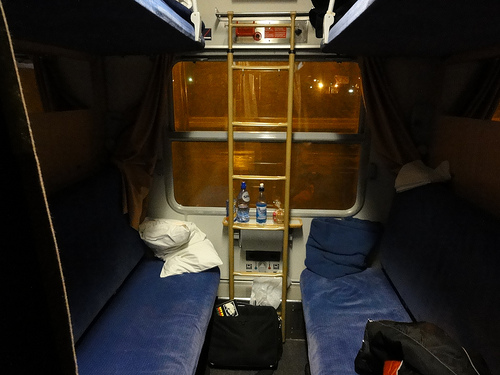
Fast forward to 2024 and night trains are not only expanding service, but they are very trendy. Some of it is nostalgia for the older way of getting around, but most of it is for environmental purposes combined with European hatred for the “low cost airline” experience with RyanAir and Easy Jet etc.
Personally I’m still not a fan of night trains because I find it difficult to sleep on them since they often get decoupled at interim stations in the middle of the night and then coupled onto other trains coming from other places, and I can’t sleep through any of that. But still, they are worth looking into and they are fun to try at least once.
A bit of warning that they tend not to be cheap and even if you have a Eurail Pass you’ll almost certainly want to book a sleeping cabin with a bunk or couchette, and that will come at an extra fee. On the other hand, if you are the sort of person who can sleep sitting upright in a normal seat, then that won’t cost any extra on most overnight trains.
Factors to consider when thinking about any Eurail Pass
Assuming you know which Eurail Saver Pass option is the best one for your type of trip by now, we’ll go over the main factors that should help you decide whether it’s the best idea for you.
Eurail Passes are best for standard ‘medium length’ journeys

However, if you are determined to travel between Rome and Paris, it’s about a 14-hour journey that will almost certainly be overnight. In this case, a cheap plane ticket is probably better, although taking shorter hops on the train is even better, so spend a day or two in Milan or Lyon on the way instead.
And of course, if you prefer to stop in various small towns between the big ones, then a Eurail Pass won’t pay off, except for the traditional kind for unlimited travel in a given period.
Eurail Passes are better value in northern Europe, France, and Spain, and poor value in Italy
Once you do a bit of research you’ll quickly learn that train tickets (and almost everything else) are much more expensive in Germany, Netherlands, Denmark, Sweden, Norway, and Finland than they are in Greece, Italy, Portugal, and Spain. With this in mind, the regional passes can make sense if you are spending time in the south, but the Global Passes almost certainly won’t. Train tickets in Spain used to be fairly cheap, but in recent years they’ve added new high-speed trains between the major cities, and these are quite expensive.
Unlike most other countries, Italy really subsidizes its train tickets so they are quite reasonable even on travel day, and very cheap if you buy a month or more in advance. For example, you can go between Rome and Florence for around €49 if you buy on travel day, and as little as €19 if you buy well in advance. In most other countries, fares are double or triple that much for similar rides.
So consider your planned itinerary. If more than half of it is in the Mediterranean countries then look into a Regional Pass or just buy tickets as you go, because they tend to be pretty cheap. But if you are planning on spending at least half your time in Paris and places to the north of it, then a Eurail Pass is probably a money saver because those tickets are expensive.
Trains are almost always better than planes
Flying sucks, even in Europe
Until you’ve experienced the joy of traveling around Europe by train you might be tempted to “maximize” your time by flying low-cost airlines between each city. This would be a mistake. In order to get truly cheap airfares you have to purchase long in advance, buying non-refundable tickets. You might also have to commit to flights in the very early morning or in the late evening, because cheap tickets on convenient flights sell out quickly.
And again, most European airports are around an hour outside of the city. They are often on the main train lines, which helps, but still you have to deal with the madness of security and also try to get there at least two hours early. From one city center to any other city center it’s about 5 hours minimum, even if they are close, and those are pretty miserable hours.
Train travel is a positive experience

Not only are all the seats comfortable on trains, but you also have an interesting view most of the time. Better still, trains deposit you in the heart of every city, which is usually the neighborhood with the cheapest hotels and food. It’s a wonderful feeling to step off a relaxing train ride, buy a hot dog or sandwich at a local shop, and then be in your hotel room only about 10 minutes later.
Eurail Passes are better than train tickets alone
As someone who enjoys the process of crunching numbers and looking for value, I have to also mention that I’d buy a Eurail Pass even if it seemed like it would cost a bit more than the individual tickets. With a pass you get an extra element of freedom that is worth a lot more than you might expect until you’ve used one.

Let’s say you are heading from Amsterdam to Hamburg tomorrow morning. The 09:00 train you planned for might seem a bit ambitious after a long night out, so you can instead opt for the 10:00 or 11:00 train. As long as you walk into Centraal Station 10 or so minutes before departure, you are on. If you are flying you can’t change your ticket, and if you are buying train tickets as you go you have to be in line at the international desk at the train station at least 30 minutes early, and even then you might miss it if they are busy.
Freedom and getting to feel like a big shot
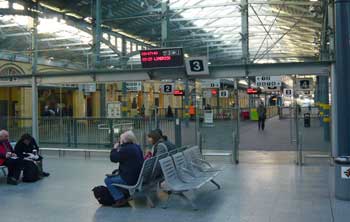
Let’s say you are staying at a hostel in Brussels, and two groups of new friends suggest that you go along with them to their next stops. One group is going to Bruges, which is a short and cheap journey, so you can join them by buying individual tickets (unless you have the unlimited pass, making it free). Then you restart your trip from Bruges, on to your next destination. The other group is headed to Berlin on a night train, which is long and expensive, but with a Eurail Pass you don’t even have to think about the cost. On you go, just like a rich person.
Buying a Eurail Pass is great for those who might run out of money
We all know people who keep meticulous track of every penny they spend, and who are always putting money away for a rainy day. And we all know people who can take a US$100 “entertainment fund” and burn through almost all of it in just a few hours. For the first type of person, a Eurail Pass can help you keep track of expenses, but it’s really the second type of person these are best for.
It’s sad to hear about people who have big plans to see their dream destinations, but they run out of money for transportation halfway into the trip, so they have to just stay put until they fly home. It happens. Locking in your major transportation costs before you leave home, and probably saving money in the process, is a wise move for anyone who isn’t as disciplined as they’d like with their money.
>>>Check prices on Eurail Passes
Bottom line: If you want to keep travel costs down, your choices will usually be a Eurail Pass or buying tickets at least a month or more early
In the last few years, almost every long-distance train ride in Europe has switched to a pricing system similar to low-cost airlines. In other words, tickets go on sale 2 to 6 months ahead of time at very low prices, and they keep getting more expensive as the train fills up and the date approaches. For most trips where a rail pass is possible, this is how things stack up:
Cheapest possible way: Buy advanced (non-refundable, non-changeable) train tickets at least 30 days in advance
Next cheapest way: Buy a Eurail Pass and make seat reservations as you go, usually only a day or less in advance.
Most expensive way: Buy train tickets as you go, or less than a week in advance.
Thinking about it this way should make the choice a bit easier. If you are the type who likes to plan each day and travel segment long before you even leave home, then buy tickets online for the best prices. This can be the best strategy for most shorter trips (10 days or less) because you simply don’t have enough time to change many things as you go anyway.
Buying a Eurail Pass won’t be quite as cheap, but you are buying a LOT of flexibility with the extra money. If you dream of making up your plans as you go, or even making up your plans just a few days in advance, this is almost always your best bet.
But if you wait too long, and just show up looking to buy train tickets as you go, they are going to cost a fortune. As recently as only a few years ago all seats would be the same price on many rail systems, so you could always just wing it. When each country computerized its rail systems so they can sell advanced tickets cheaper, they also had to keep track of seat reservations, so the whole pricing structure had changed to favor advanced ticket buyers and rail pass holders over those who’d prefer to just hop on any train as it is leaving the station.
Have a rail pass or itinerary question of your own?
It wasn’t planned but scores of people began asking me rail pass and itinerary questions at the bottom of this article and a few others. I’m happy to keep answering them and now I’m trying to organize them better as well so they are easier for other people to find.
If you have a question about specific types of European rail passes, please ask it in the comments below.
But if you have a question more about a European itinerary or other non-rail-pass questions, please click over to the European itineraries Q & A article and ask in the comments of that one.

Good afternoon Roger and Hello from New York
I am graduating college next year finally lol and would like to go backpacking through Europe. May I please ask your suggestions on where to go and what makes sense? I am going for 21 days and I would like to see Ireland, Scotland, England, Amsterdam, Germany, Denmark, Spain and Portugal. I have already been to Belgium, France and Greece so not looking to add that to my trip. Any suggestions I would greatly appreciate it. Thanks in advance
Eleni,
It’s hard to get too specific without knowing much about your tastes and such, but the first thing I can say is that 7 countries in 21 days is too many. In fact, I’d think of your itinerary as 3 separate trips in the long run. You’ve been to 3 European countries already so you know you enjoy it and want to do more of it. Also, you are still young enough that you’ll have many more opportunities to tour all the different regions in depth.
So what I’d recommend, assuming you are really dealing with just 3 weeks, is to first choose either the British Isles, northern Europe, or the Iberian Peninsula for this trip. Which would you do first if you were planning on doing them one per year for the next three years? Once you answer that question, I’ll be happy to help you sort out a more specific itinerary. And while we are at it, when you visit Spain and Portugal it’s cheap, fast, and easy to pop over to Morocco by ferry for at least a few days, so consider adding that one to that trip.
If, for some reason, you think this will be your last Europe trip and you want to see those 7 countries, I will help figure out the main highlights in an order that could work. -Roger
Hi Roger, I am 32 so not that young lol and as I have Greek citizenship and can travel through Europe freely I have that to my benefit. My greatest passion is travelling seeing the sights and learning about each countries culture, learn about the people, eat their food so I’m not very big on having to stay at the fanciest place and this way to save some money there too. I am a little nervous as I may be doing this trip on my own to go to Morocco assuming I do not use my US passport do you think it would be safe or better to use my European passport? I have a few friends that have gone and suggested I not go there by myself. I would definitely like to do Spain and Portugal for sure, I have a friend that lives in Denmark so that would be on the list and I figured since Germany was close by I could do that. But my biggest places of all are Scotland, England and Ireland, Spain and Portual but I understand they are on opposite ends. I have stayed in a hostel in Brussels before and it was a little scary so hoping I get a decent hostel I’m ok with that. Also how much money would you recommend I walk with? I have already started saving and do I need one of those big backpacks I see people walking around or would my suitcase be sufficient. My cousin is currently doing Israel, Turkey, Zurich, England, Germany, France and Greece in 3 weeks. I would like to add I am extremely grateful for your help and all your suggestions. Thank you in advance 🙂
Eleni,
Regarding Morocco, it’s a safe and friendly country, although I can understand that solo female travelers might be nervous about it. I don’t even know what you mean about using one passport or another. Many Americans arrive there every day with zero complications. Still, solo female travelers can get some unwanted attention there, so I wouldn’t blame you for saving Morocco for a trip when you go with someone else.
So in 21 days it’s probably best to save Germany and Denmark for another trip. Germany is huge and even if you just did Berlin it would require 3 days minimum. Copenhagen is lovely and can be seen in about two days, but it’s remote so flying is the best option.
In the British Isles, the must-visits are obviously London and Edinburgh. In Ireland it’s a bit tricky because Dublin is a poor representation of the “magic” of the country. In other words, most people who tour Ireland for a week or two report that Dublin was not their favorite stop. It’s really a country (sort of like New Zealand) where you want to enjoy the scenery and smaller towns rather than two days in the capital.
In Scotland you might visit Inverness before or after Edinburgh. I was just there and it’s a lovely town of about 50,000, at the edge of the Scottish Highlands. Skip the Loch Ness Monster stuff, but consider a tour of the Highlands or the Isle of Skye.
For England, adding Oxford, Cambridge, and/or Bath to a London visit are justifiably popular because they they are all nice contrasts to the vastness of the capital. For Scotland and England, it’s best to sort out your itinerary well in advance and buy train tickets online as early as possible. Train tickets weeks in advance can be very cheap (as little as US$15 for long distances), but if you buy on the day of travel they are very expensive (as much as US$75 for a 2-hour ride).
Doing Spain and Portugal in a hurry is simple because the classics are all worthwhile. Fly to Barcelona or Lisbon and stop in Madrid in the middle of seeing all 3 of them. If you buy plane tickets well in advance that might be very cheap as well, like London to Barcelona and then Lisbon to London 9 days later.
As for a budget, have a look at the Europe Backpacker Index, linked at the top of every page of this site. All these cities are on there, and the amount for each city is a common daily budget amount. You can do them cheaper if you are careful, or of course spend much more if you have more to spend.
For hostels, Europe is filled with great ones. I have recommended hostels on many of the city pages on this site, and all of these are popular, highly rated, well located, and good value. The trick to finding good hostels is to go to hostelbookers (cheaper than hostelworld) and look for hostels that get at least 80% positive reviews, and that have many reviews compared to others in that city. Hostels that only have 10 or 20 reviews are harder to trust, but with 300 or 500 reviews that are mostly positive, you can book with confidence.
A backpack is a very personal thing so it’s hard to give advice. One thing is certain though, that you should plan on traveling as light as possible. If you buy a huge backpack you will fill it up and it will weigh you down, while if you buy a smaller one you’ll still get by with it and it’ll be easier to move around nimbly. Let me know if/when you have more questions. -Roger
Good morning Roger, thank you very much for all your advice! I have bookmarked this page to do everything you suggested. If I think of anything else I will be back lol thank you very much for all your help and sharing your knowledge 🙂
hi roger.. thanks a lot for providing very good info regarding eurail.. my self is an Indian and working as a News Reader with All India Radio, Ahmedabad.. aged 59.. after retirement I want to travel the whole Europe thru eurail.. will u please help me to plan out the route of it?
Bharat,
That sounds like an amazing trip you’ve got in mind. The thing about Eurail Passes is that they are best for people who are trying to see many different cities in a period of 2 weeks to 2 months. For shorter or longer trips, there are better options. So I’d need to know how long you intend to travel and how fast you prefer to go, and based on that I can help you with more specifics. -Roger
Hi Roger,
I am planning a trip to europe for like 12 days with my family of 4 . I plan to cover spain, france, austria
4 days each. What pass should I buy ? I plan to cover 2 cities in each country .
But with france out of erourail network, i am really confused with what to do
Rohit,
For this trip you are best off getting a France-Spain Pass and paying for Austria as you go. The France-Spain Pass is available as a Family Pass in First or Second Class so it’s a great deal, especially considering that individual train tickets in both countries are fairly expensive. You can get them for 4, 5, or 6 travel days, and one of those will be ideal for your trip, depending on your exact itinerary.
Your complication comes in that you have to go through another country to reach Austria from France. You might be better off flying. Let us know the specifics of which cities you are visiting in which order and I can help you sort out the best way to do it. -Roger
Aloha Roger from Maui! My new husband and I will be honeymooning in Europe for the month of October. We’re not sure about transportation plans….which train pass to purchase and need your help. We are starting in Amsterdam – Paris – Switzerland? (have friends there) – Venice – Amolfi Coast – Barcelona – Portugal. Would like to take the ferry from Italy to Barcelona and have heard that it’s cheaper and more efficient to take buses in Spain and Portugal. Thinking about flying from Barcelona to Lisbon or Porto. What train pass would you recommend purchasing if you were on a budget and trying to make every dollar count? Thank you so much!!
Maria,
For this itinerary there isn’t really a good rail pass option, or at least one that would save you money. The problem is that you don’t have enough journeys to make a Global Pass worthwhile, and if you are going through France you can’t get a Select Pass (3 to 5 countries). What I’d recommend is buying those first two train tickets in advance online (buying early saves money on those), and probably book the ferry to Barcelona early online as well.
If you are skipping Madrid then I think flying to Lisbon is a good idea, and even from Madrid it’s an overnight train to Lisbon anyway. Book that flight ASAP as well. It’s true that buses are cheaper in Spain and Portugal and they go many places that trains don’t, so they are the best option. The only exceptions are between the major cities in Spain, many of which have high-speed trains that cover great distances in only a couple hours. -Roger
Hi Roger,
Thanks again for quick reply. I will follow your advice.
Best Regards,
Srinivas.
Hi Roger,
This is in continuation of my previous message. I selected Luzern to visit Jungfraujoch and Mt. tilts. I found the hotel accomodation at Luzern is quite expensive. Is there any other place to stay and visit these places in terms of time and money.
Best Regards,
Srinivas.
Hi Roger,
Can I use Euro global pass or Euro select pass in Switzerland for the following travel;
1)From Basel to Luzern
2)From Luzern to Interlaken and back
3)From Interlaken to Jungfraujoch and back
4)From Luzern to Engelberg and back
May I know the type of train in these sectors(like Ec, IC etc.,)
Best Regards,
Srinivas.
Srinivas,
You could use either of those passes for these trips within Switzerland, but if this is your whole itinerary you’d be better off with a Swiss Pass, which is sold on its own from a different system. Or you might just buy as you go. These are all relatively short journeys that won’t cost too much on their own, although if you are going there and back on the same day then a rail pass probably would save you money.
The exception is the Interlaken to Jungfraujoch leg, which is a private and very expensive railway. They offer discounts of 25% to Eurail Pass holders and 50% to Swiss Pass holders, but you can’t use a pass for the travel day.
Most of these are on Regional trains rather than the ICs, although Basel to Luzern is part of a high speed line so those are available as well. All the trains in Switzerland are comfortable and modern, and since all of these journeys are around 2 hours or less, any train should be fine. -Roger
Hi Roger,
Thanks four quick reply. I am giving below my final program for train journeys after arriving Frankfurt by air: We are two people.
1) Frankfurt – Minden
Stay at Minden for 2 days
2) Minden – Amsterdam
Stay at Amsterdam for 2 days
3) Amsterdam – Lucerne(Luzern) – same day travel
Stay at Luzern for 3 days
4) Luzern – Interlaken and back( to visit Jungfraujoch)
5) Luzern to Engelberg and back ( to visit Mt. tilts)
6) Luzern to Venice –Same day travel via Milano
Stay at Venice for 1 day
7) Venice to Basel -Same day travel via Milano
Stay at Basel for 1 day
8) Basel to Frankfurt
Depart from Frankfurt by air to home.
Can you please suggest the type of pass(Global or Flexi) for the whole trip?
Best Regards,
Srinivas.
Srinivas,
Your trip looks ideal for a 4-country Select Pass with 8 journeys in 60 days. Go to that link and put in Germany, Netherlands, Switzerland, and Italy, with 8 journeys and it will show good prices for 2nd Class or if you are 26 or over you’ll get the 1st Class Saver Pass for two people traveling together. The Global Passes start at 10 journeys and you are only planning 8 travel days so these are ideal. And you’ll save quite a bit with a pass for this itinerary because all these individual tickets (counting the Swiss round trips) will be expensive on their own.
As for Lucerne hotels, as far as I know it’s pretty much the cheapest hotel town in that area, and the problem is that Switzerland in general is expensive. You might try going to hostelbookers.com and looking for a private double room in a hostel there, which should be cheaper than most hotels. -Roger
Hi Roger,
I’ll be travelling for the first time in Europe and was getting a bit intimated by all the planning that is needed. But your tips and suggestions have been very reassuring. So I want to thank you for that.
So after reading this article, I have some idea of what kind of Eurail pass I should be buying, but I thought I should still run it by you.
I am planning to travel to the following cities in the next month:
Budapest (3 days), Vienna (3 days), Prague (3 days), Berlin (3 days), and Amsterdam (2 days), with about 4 days to spare and left quite open.
I plan to stick mainly to the major touristy things in and around these cities, and perhaps travel to small towns around them. I don’t anticipate travelling to other major cities close to any of these cities though. I was first thinking of getting a global pass (15 continuous days perhaps) as I thought it would cover me for most of my trip. But after reading your article, it seems like the global pass is probably not the best pass to buy for my situation. I was under the impression that a Eurail pass will cover me local transport within/around a city, but from what I have read here and on other pages, it is not. This means that I won’t be using Eurail everyday for travelling. Now I hear something about how the Berlin S-bahn is covered in the Eurail pass, but I didn’t quite get it. Maybe you can shed some light on that.
Given my itinerary, what type of Eurail pass do you think suits my situation? 5 country Eurail pass, or some sort of combination of Select and Regional passes?
Any advice on the most economical kind of Eurail pass will be highly appreciated. Thanks!
Mo,
It looks like you are only planning on 4 longer train rides on this trip, and if that’s the final plan I think you are better off paying as you go. The cheapest Eurail Pass that could work would be the 5-country, 5-journeys Select Pass, but based on this itinerary it would be cheaper to buy as you go. Of those 4 journeys you mention, the only one that is sort of expensive is the Berlin to Amsterdam one.
However, if you decide to add another major stop with those 4 extra days (as long as it’s in one of the 5 countries, most likely Germany), then that Select Pass might work well. For example, you could go to Munich between Berlin and Amsterdam. But if you want to stick more or less with what you’ve written, just buy as you go and try to get that last one early online to save money.
In Germany all the major cities have S-Bahn systems, which are suburban rail lines, and those are covered by a pass on the days you designate as travel days. But the 5 largest German cities also have U-Bahn systems, which are (mostly) underground/subway lines, and those are not covered, though they are pretty cheap anyway.
One strategy I recommend to get the most out of a pass on a trip like yours (where most of your journeys are 5 hours or less) is to get an early train, say, from Prague to Berlin. If you arrive by 1pm or so you can put your bags at the hostel or hotel, and then head right back out to, say, Dresden, for the afternoon and return to Berlin that evening. That’s just one hypothetical example of how you can get great value from a pass because all those legs would be free since it’s one travel day. All of the cities on your list have other interesting cities just an hour or two away by train, so you could do that several times. -Roger
Thanks so much for the quick reply Roger. I really appreciate you taking the time to actually look at my itinerary and give me a response specific to my situation. -Mo
Hey Roger,
I really like the idea of using the same travel day to go to a nearby city, like from Berlin to Dresden and back. Can you advice other close by cities to the 5 main cities that I have mentioned that you think are worth seeing?
Thanks
Hi Roger,
Fantastic page and thanks for such in depth details.
Myself and my wife are planning a trip from the 25th of July till the 13th of August.
The planned trip is Frankfurt-Cologne-Amsterdam-Paris-Zurich-Frankfurt. Do you think the Global pass is more convenient or should I stick to the 4/5 country pass. Since its 2 of us, i am sure the 15% discount should be good as well.
Also, will it be sufficient if we make our reservations just one day prior from these cities as i went through the websites and am a bit confused.
Shankar,
Thank you. The situation is slightly complicated in the fact that France can’t be included in the 3 to 5-country Select Passes. So a Global Pass would be better except that the shortest duration is 10 journeys or 15 consecutive days. For a 3-week trip with only 5 travel legs, a Global Pass wouldn’t pay off. Your one good option is to get a 4-country 5-journey Select Pass, and the only extra you’d have to pay is for the two portions within France, which is easy to do when you reserve your seats. In other words, when you get your seat from Amsterdam to Paris, you’ll be asked to pay for the portion from the France border to Paris because your pass will cover the rest.
For these journeys you should be fine making your seat reservations the day before or even on the day, except for the Amsterdam to Paris leg where you’ll want to make the reservation a few days out, perhaps the day you arrive in Amsterdam. The high-speed trains on that route can sell out for the better times a few days ahead. They leave about once an hour and if you wait until the day before you might have to leave at 7am or 2pm rather than in between, although you’ll certainly get a seat on one train on the day you want, even if it’s not the ideal time. -Roger
Hi
Starting in the fall of 2014 i want to go to europe for almost a year. I’m planning on staying and working in the uk for the first 4-5 months and then backpacking around for the rest. I am just starting to plan my itinerary but I wanted to probably start in Amsterdam, then go through Germany, maybe jump over to Prague, hopefully down to croatia, then spend a lot of time covering Italy and France. I want to be able to hit alot of places that aren’t necessarily the big cities. Are there trains that go there? I was looking at maybe getting the Benelux/Germany pass to start and then later using a france/italy pass? The rest of my trips i was thinking I could just book at the time. Do you think this would work? I’m a little confused about whether or not it will be worth it because I am going to be backpacking for longer than two months. Would i be allowed to activate one pass at one time and another later on in my trip? Thanks!
Marissa,
Train coverage is quite amazing in most of Europe and they go to pretty much every town you’d be interested in. The exceptions are in Greece, Turkey, Croatia, and the Baltic states as well, but in all of these cases you’ll find buses that are quite comfortable and even cheaper than trains.
If you are going really slow and you have 6 months to travel, it’s debatable whether any rail passes would be good value. They tend to be best for people trying to see a lot in a 2 week to 2 month period. However, trains in Benelux, Germany, and France do tend to be expensive when purchased as you go, so if you plan a part of your trip where you’ll be covering quite a bit of ground in those areas then a pass could work well. You’ll really want to figure out a fairly specific itinerary before you’ll know whether it’s good value.
And there is no central system that keeps track of who has purchased or activated which pass, so you can buy multiple passes and activate them whenever you like. The key things to remember are that you can’t buy a Eurail Pass from within Europe, but you can buy them six months in advance before activating them. In other words, for a situation such as yours it would be best to have someone buy them while you are in the UK from home and have them send them off to you a couple weeks before you arrive in Amsterdam. From the time they are issued you’ll have 6 months to begin using them, so you’ll be set. -Roger